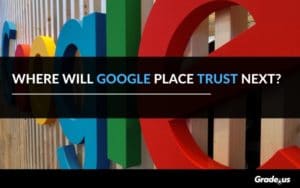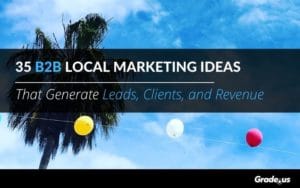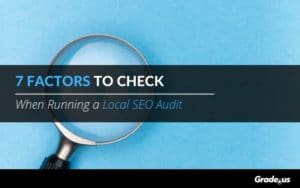The guest blog is courtesy of Christian Sculthorp. Christian is the marketing director at Agency Analytics, an all-in-one marketing dashboard for agencies with SEO tools, social media and more. In a previous life, he was an SEO consultant and can’t shake his devotion to organic rankings. When his marketing hat’s not on, you’ll probably find him listening to a tech house set and drinking a beer.
There are plenty of websites which list the basics of Local SEO. In order to compete in local SEO, you need:
- An Optimized Website
- A Google My Business Listing
- Local Citations (directories)
- Link Building (We’ll cover the first three)
Link building is the one thing that trips up a lot of local businesses. They aren’t sure how to build them, and are frightened that spammy links will sink their site. There are usually a number of things you can do to improve your local visibility without building links.
I’m going to go over seven (usually) overlooked local SEO tactics that will help you out without backlinks.
1. Choose the right categories in Google My Business
When you first sign up for Google My Business, they only ask you for one primary category. For the primary category, you should pick the most relevant category available. If you owned a hamburger restaurant, this may be the best choice:

Business owners forget that you can add more categories in the edit screen of your Google My Business location. Your hamburger restaurant is also a ‘regular restaurant’, a ‘fast food restaurant’, and may be relevant for other categories, like ‘delivery restaurant’.
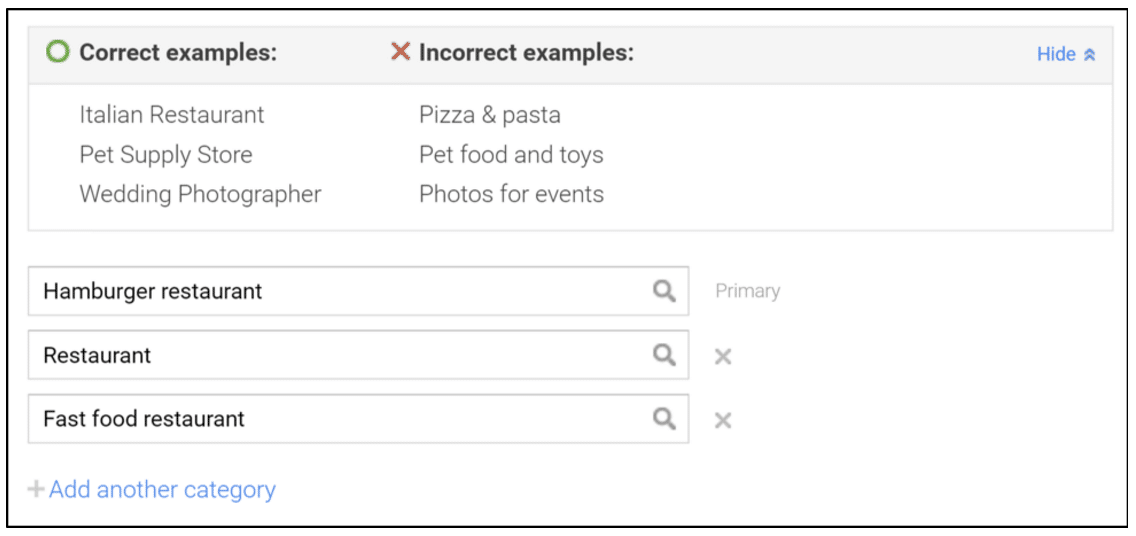
Google officially recommends that you choose only one or two categories. As seen in their support page, a snippet below:

Source: https://support.google.com/webmasters/answer/92319
I see no downside of adding more relevant categories to your listing. Google allows you to add up to 10. You can use the Moz Local Category tool to get ideas. Don’t go overboard of course, because your business could be penalized for ‘category stuffing’ or including irrelevant categories. Only add categories which are actually applicable to your business.
2. Get a Trusted Photographer to do a Virtual Tour
If you’ve been on Street View in the past year, there’s a good chance that you’ve stumbled into a business by mistake. The virtual tours are very cool additions to local search that let potential customers sneak a peek inside your business.
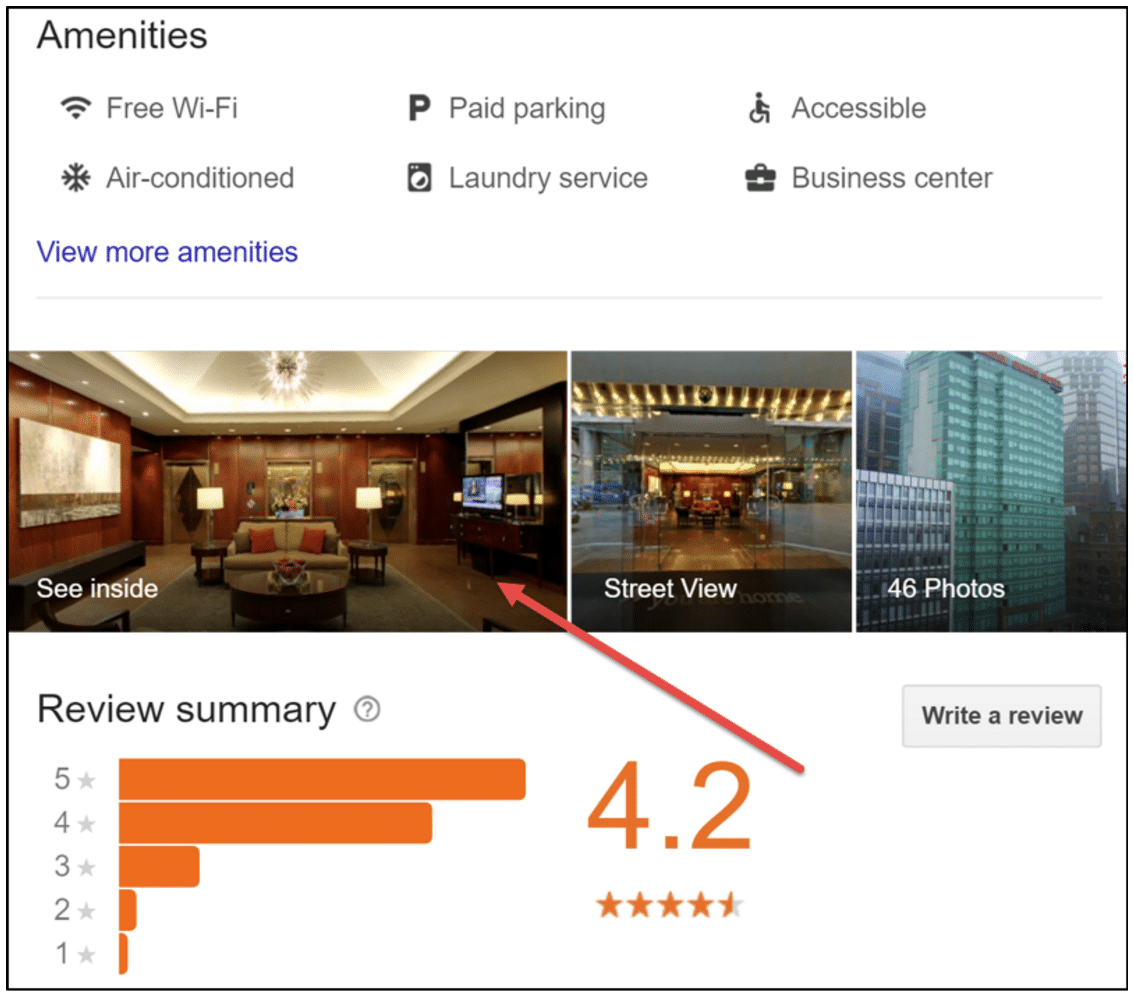
Google hasn’t outright said that adding a virtual tour increases your rankings, but it’s hard to believe that they wouldn’t reward businesses for this type of deep dive content. Including many, high quality pictures in your listing is a ranking factor. The value of photos increases if your customers are the ones posting the pictures. Even if it doesn’t improve ranking results immediately, according to Google, those who view a listing with a virtual tour are twice as likely to book a reservation there. That’s a big jump in conversion rate.
There is one hiccup: professional photos cost money. The cost depends on the photographer or agency. Google wants you to have professional photos to represent your business. Google even provides a list of local, certified street view photographers.
3. Build Relevant Content (For Long-Tail Keywords)
Many “Local SEO Experts” recommend that you create lots of content for your local business. They don’t really give you a reason why. The phrase “content is king” gets tossed around a lot, but if you’ve just been making lots of content without strategy or goals, you might not be seeing any results.
There are two reasons to start creating content that will benefit Local SEO for your business:
1. To target long-tail keywords. Long-tail keywords are highly specific queries which you may not be targeting with your homepage. When someone is researching your services, they might go to Google and write a general query or they might write something incredibly specific. Long-tail keywords are these more specific queries. You won’t see as many people searching for them, but for those who do, it’s an opportunity to provide them EXACTLY what they’re searching for.
See Brian Dean’s post on finding long-tail keywords to get some ideas. These can include variations of your offerings, competitors’ names, or any other relevant terms which can drive business.
2. To create a topic cluster within your website. Matthew Barby (see tip #17 in his post) can explain it better than me:
“A topic cluster is a collection of semantically relevant content that individually cover smaller themes within an overarching topic… Having large groups of content that all revolve around the same topic will build more relevance around keywords that you’re trying to rank for within these topics… Not only that, but it makes it much easier to interlink between your content, pushing more internal links through your website.”Matthew Barby, Global Head of Growth & SEO at Hubspot
Build relevant content out on the website to become an authority on the subject in Google’s eyes. If you own a hamburger shop you can write about food festivals, your new lamb burger, or your latest review in the local newspaper. Make sure the content is very relevant to your main topic (Toronto Hamburger Restaurant) and interlink throughout your website.
In fact, building links continues to have a ton of value when it comes to growing your organic search traffic.
And for those of you who fear that backlinks are declining in value, David Farkas, produced a great case study highlighting the value of backlinks for ranking on search engines.
4. Ask For Reviews
Not only do reviews play an important part in a local SEO campaign, but they heavily influence potential customers. BrightLocal’s consumer survey found that 92% of consumers regularly or occasionally read reviews to determine whether a local business is a good business. That’s a LOT of potential customers.

Reviews are important, but many local businesses just leave online reviews to blind luck instead of asking their customers.
The fix: implement an automated review acquisition system to catalyze customers into generating reviews for your website. Automated software allows you to consistently convert happy customers into online reviewers and win back unhappy customers before they posted a public negative review.
Generate a link that you can share with customers that sends them to the review page. Print this link on business cards, send customers emails, prompt them after they sign up for wifi. Use these tactics to drive quality reviews for your business that will help more than just local SEO.
5. Make Sure Your NAP is Clear On Your Website With Schema
People worry about the NAP (name, address, phone number) being consistent across citations, but many forget to include it on their website. Google recommends that you have it clearly stated on your home page, your ‘About Page’, or both. This seems obvious, but many overlook this simple step.

Source: https://support.google.com/webmasters/answer/92319
What Google fails to include in their instructions, is that it should also be marked up with schema.
What is that you ask?
Schema is a way to add identifiers to content to tell search engines exactly what they’re looking at. It’s a type of structured markup language to help search engines organize and sort data. To get started check out Synups’ guide to local schema.
6. Generate Local Geo Sitemap
Sure, you’ve got an xml sitemap, html sitemap, possibly an image sitemap, but did you know there’s a Geo sitemap that helps with local SEO? This, like adding schema markup to your website, tells search engines where you’re located. The more you can confirm this information with search engines, the better.
It’s easy to get started with a local geo sitemap with this generator tool. Fill in your business information, or add multiple if there’s more than one location.

Download both the KML and Geo sitemap files.
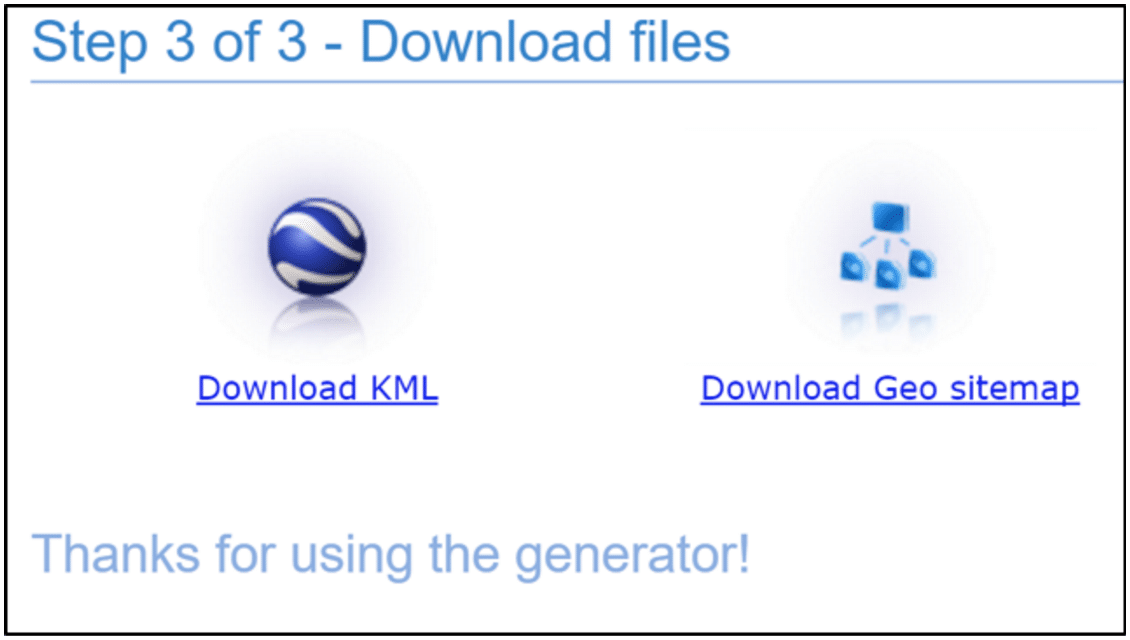
Upload both of them to the root of your website through your ftp client or any other means. Make sure you login to Google Search Console and add the Geo sitemap to the sitemaps section. That will ensure that Google picks them up!
7. Complete Bing Places Listing
When we talk about local SEO, chances are we’re talking about optimizing for Google. It does power a large majority of searches around the world which makes it the clear priority.
Thing is, the little guy – Bing – still has a 15% market share . This is nothing to turn your nose at. If your investment portfolio had a 15% increase YoY, you’d probably be ecstatic. You should feel the same about Bing. Many people don’t consider it at all, which makes it a good opportunity for local businesses.
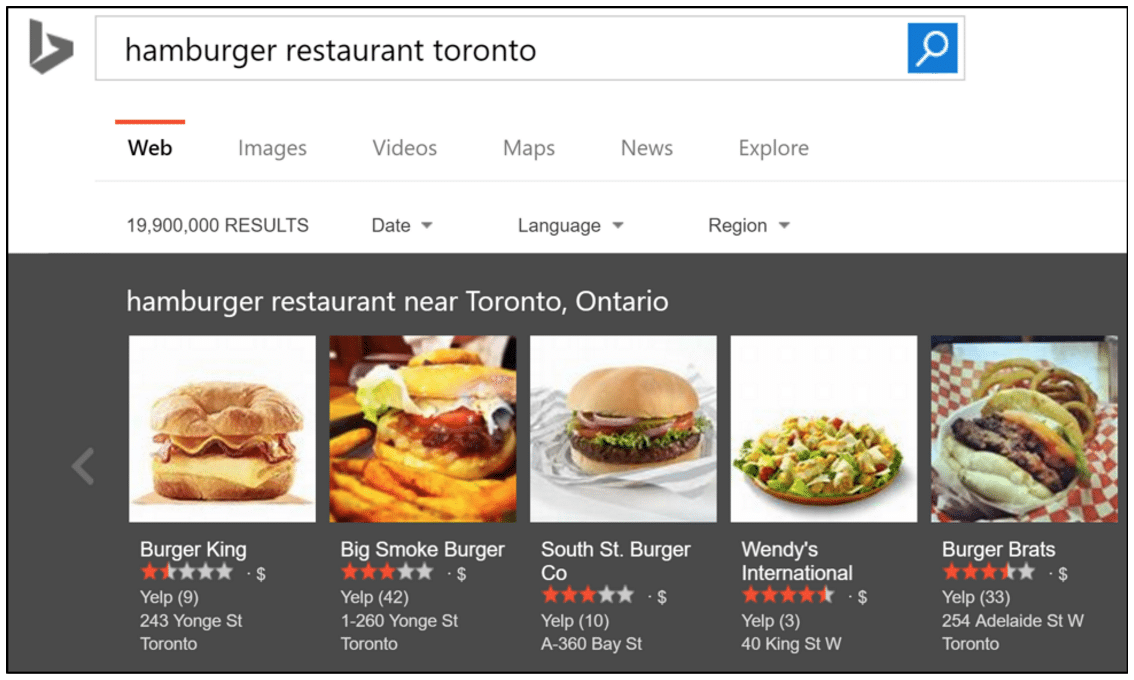
In order to take advantage of this, sign up for a Bing Places listing. The idea is almost identical to Google My Business. Make sure you completely fill out your profile with proper categories, thorough descriptions, opening hours, pictures and more.
Bonus:
Here's a great SEO movie told by industry pioneers Danny Sullivan, Rand Fishkin, Jill Whalen, Brett Tabke, Rae Hoffman and Barry Schwartz, and narrated, produced and directed by John Lincoln, CEO of Ignite Visibility:
Conclusion
If you’re a local business, doing proper local SEO can make a profound difference on the amount of traffic that comes to your business. While it’s not rocket science, it’s important to diligently take every minor step required and optimize all of your listings. Before you start worrying about building links make sure you take care of these seven steps first!
About the Author
Christian Schulthorp
Christian Sculthorp is the marketing director at Agency Analytics, an all-in-one marketing dashboard for agencies with SEO tools, social media and more. In a previous life he was an SEO consultant and can’t shake his devotion to organic rankings. When his marketing hat’s not on you’ll probably find him listening to a tech house set and drinking a beer.





